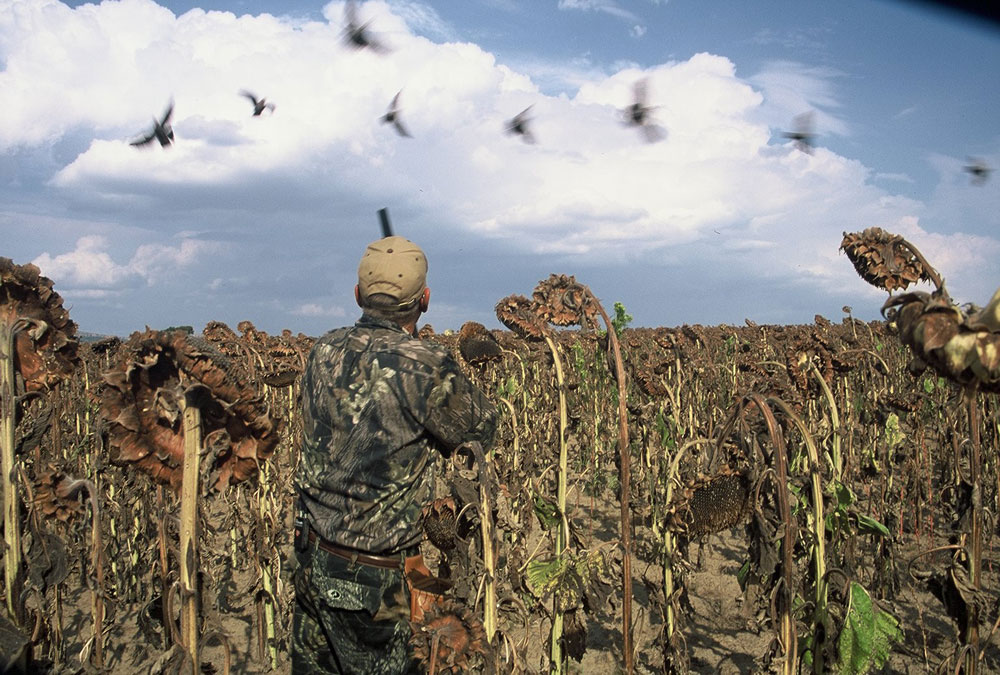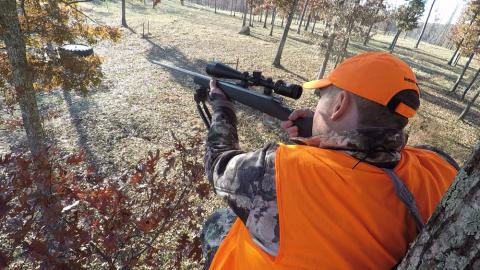provided by John E. Phillips
“I’ve been on the Mossy Oak National ProStaff ever since the company has had a ProStaff,” said Marty Fischer, one of the nation’s top shotgun-shooting instructors and clay-target course designers. Fischer has multiple gold medals from several World Skeet Championships and Sporting Clays. For many years, Fischer competed in shotgun shooting events worldwide. Now he helps design clay-target courses and teaches shotgun shooting (the past 30 years) at wing-shooting schools and to national competitors. After seeing Fischer shoot in the dove field, I’m convinced that he shoots fewer shells to take more doves than anyone with whom I’ve ever hunted. Fischer has shot birds on four continents and in 11 countries.

Most dove hunters believe that the more shells they shoot, the more doves they’ll take. So, they’ll have 4-5 boxes of shells and blast away. They also think they’ll get the most bang out of their bucks, by buying the cheapest shells because they are on sale just before dove season. However, both of these assumptions are totally wrong.
At this writing, I think there are about 18 different ammunition companies either making shot shells in this country or having them shipped in from overseas. To take more doves with fewer shells, you need to know more about what’s inside those shells. Most shotgun shells are made up of lead and antimony, an additive that’s added to lead shot. This makes the lead harder, and therefore, the more antimony in a lead shot, the tighter your pattern will be. Lead is very soft. If you shoot shells with shot that’s 100-percent lead, the pellets will start banging against each other that create flat spots. Then when the shell comes out of the barrel, the shot no longer will go straight, but will fly away, giving you a terrible pattern. That’s why the steel shot pattern is much tighter than the lead shot; it doesn’t deform.
I always shoot quality target loads in a dove field (the same shells you shoot for skeet, trap and sporting clays). I like 3 drams, 1 ounce or 1-1/8-ounces of powder with either a No. 7-1/2 or a No. 8 shot, because target loads have a higher content of alloy than the wholesale shells you find just before and during dove season. The same shells that I shoot at sporting competitions are the same shells I shoot while dove hunting. I want to shoot a shell that’s moving at 1,200-1,350 feet per second, which equates to about 900 miles per hour. Usually, those shell speeds will be printed on the box of target loads under the muzzle velocity.
Frequently, a dove hunter will say, “I bet those target loads are much more expensive than the dove loads that are on sale.” Then I’ll explain, “The least expensive part of the dove hunt is the shell. The difference in target loads and discount dove loads is about $2 per box. This means that if you shoot about 100 shells, the target loads only will cost you $8 more than the less expensive dove loads that don’t work as well. Walmart currently sells Winchester AA shells https://winchester.com/, and most target shooters use these because of how hard the pellets are. For a few dollars more, you can shoot better shells and will more than likely take more doves.
If I see a dove hunter shooting 100 shells in the field to get their limit of doves, I know that they’re not a very good wing shooter. Better shells not only make you a better shooter but also a better dove hunter.
Learn more about Marty Fisher:



























